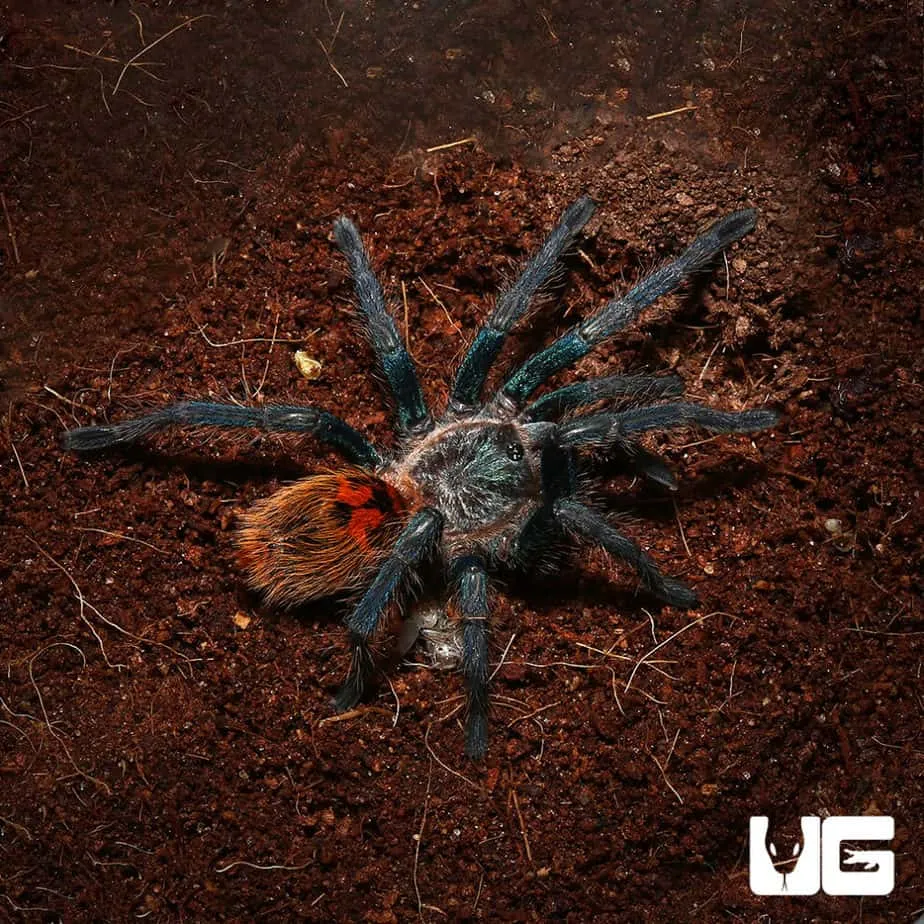What is a Blue Tarantula
The Blue Tarantula, scientifically known as Chromatopelma cyaneopubescens, is a striking and sought-after species in the tarantula hobby. Its vibrant blue coloration, particularly on its legs and carapace, makes it a visually stunning creature. Originating from the arid regions of South America, specifically Trinidad and Venezuela, these arachnids have gained popularity among enthusiasts due to their beauty and relatively docile temperament. Understanding the Blue Tarantula’s unique characteristics is crucial for prospective owners, ensuring they can provide the proper care and environment for these captivating spiders to thrive. Its striking appearance is a result of iridescence, caused by the structure of their hairs, rather than pigmentation. The name accurately reflects the tarantula’s defining feature, and they are indeed as vividly blue as they sound.
Appearance and Identification
Identifying a Blue Tarantula is relatively straightforward, thanks to its distinctive color. The most prominent feature is the metallic blue coloration that adorns its legs, carapace (the top part of its body), and sometimes the abdomen. The rest of the body can vary in color, often appearing orange or reddish, which creates a stunning contrast with the blue hues. In addition to its color, the Blue Tarantula has a moderate size, with females typically reaching up to 6 inches in leg span. Careful observation of these features will help in accurate identification and distinguish them from other tarantula species. This distinctive color pattern is what makes them so popular, setting them apart from the many brown and grey tarantula species.
Habitat and Natural Environment
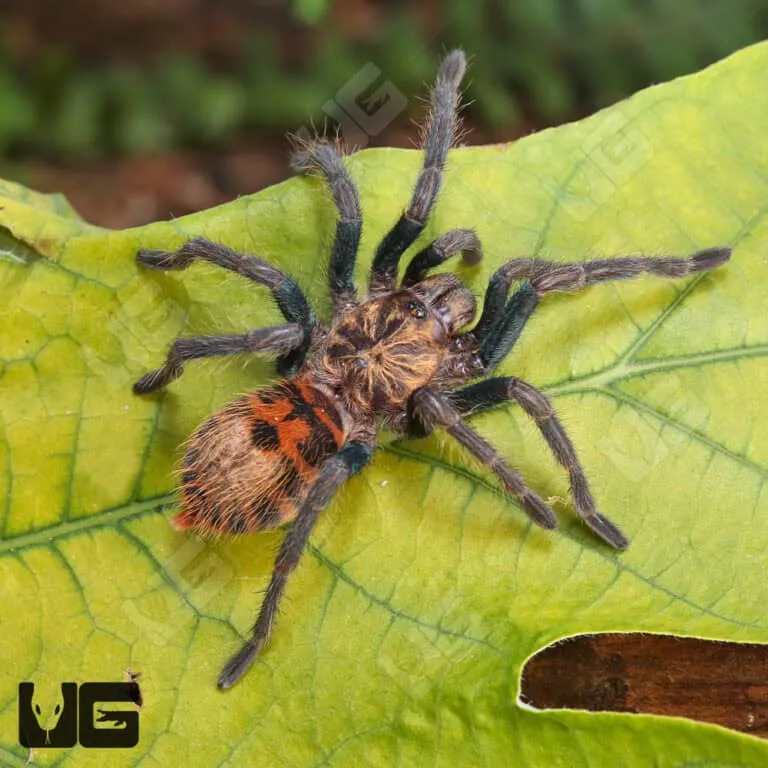
In their natural habitat, Blue Tarantulas are found in the dry, scrub-like environments of Trinidad and Venezuela. They are terrestrial spiders, meaning they live primarily on the ground, and often create burrows or seek shelter under rocks and in crevices. The environment they inhabit is crucial for their survival, characterized by specific temperature and humidity levels. These spiders have adapted to these conditions, developing behaviors and physical characteristics that enable them to thrive in such settings. Understanding the natural environment of the Blue Tarantula is essential for providing appropriate care in captivity, which involves replicating the conditions they are accustomed to, thus ensuring their well-being.
Geographic Distribution
The geographic distribution of the Blue Tarantula is limited, primarily confined to the islands of Trinidad and certain parts of Venezuela. This restricted range contributes to their relative rarity and desirability among tarantula enthusiasts. The specific environmental conditions in these regions, including climate and vegetation, support the Blue Tarantula’s survival and reproduction. Conservation efforts and careful consideration of their natural habitat are essential to protect this species. Any changes in this geographic environment can pose significant risks to their existence. Preserving their natural habitat is key for ensuring the survival of the Blue Tarantula.
Behavior and Temperament
Blue Tarantulas are generally known for their relatively docile temperament, making them a popular choice for tarantula keepers. While they are not aggressive, they may exhibit defensive behaviors if they feel threatened, such as flicking urticating hairs or attempting to flee. Understanding their behavior is crucial when handling or interacting with them. Consistent and careful handling can help in building trust and reducing stress for the spider. The key is to move slowly, avoid sudden movements, and be patient. Observing these behaviors helps to foster a positive relationship between the keeper and the tarantula.
Defensive Mechanisms
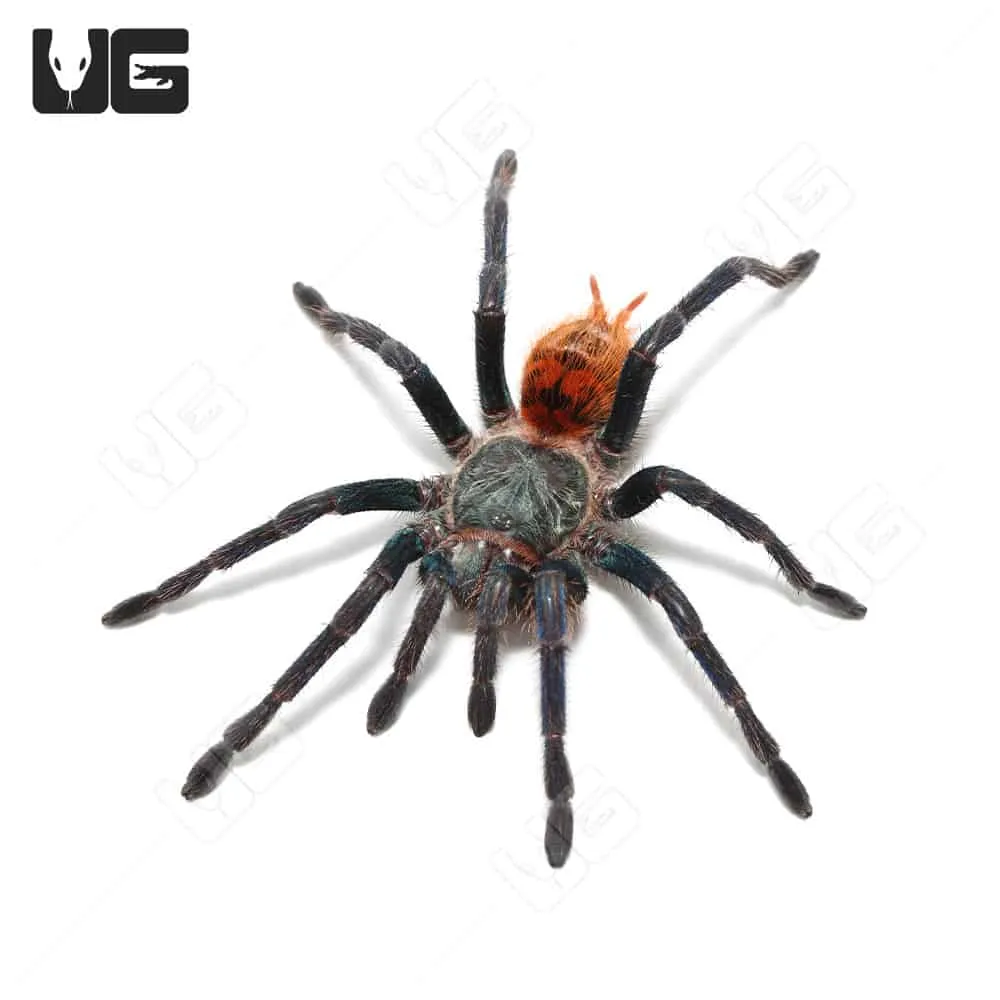
As a defense mechanism, the Blue Tarantula, like many New World tarantulas, possesses urticating hairs. These tiny, barbed hairs are located on their abdomen, and when the spider feels threatened, it will flick these hairs towards the perceived threat. The hairs can cause skin irritation and itchiness if they come into contact with the skin or eyes. Additionally, Blue Tarantulas may bite if provoked, although their venom is generally not considered medically significant to humans. Learning about these mechanisms is essential for safe handling and care. Understanding the spider’s defense mechanisms helps owners to handle them safely and prevent any potential discomfort.
Common Myths about Blue Tarantulas
There are several misconceptions surrounding the care and behavior of Blue Tarantulas. One common myth is that they are extremely aggressive, which is not entirely true, as they are known for their generally docile nature. Another myth is that they require very specific and complex care, which can be simplified with proper research and preparation. It’s important to dispel these myths and rely on accurate information from reputable sources, such as experienced keepers and scientific publications. Understanding the truth about Blue Tarantulas is crucial for potential owners to make informed decisions about their care and provide the best possible environment. Avoiding these myths helps in building a realistic understanding of the spider’s needs and capabilities.
Lifespan and Growth
The lifespan of a Blue Tarantula varies depending on the sex of the spider. Female Blue Tarantulas have a significantly longer lifespan than males, often living for 12-15 years, while males typically live for only 3-5 years after reaching maturity. The growth rate of Blue Tarantulas is also dependent on factors such as feeding and temperature, with younger spiders growing faster than adults. Proper care, including a balanced diet and a suitable environment, plays a vital role in supporting the growth and longevity of these tarantulas. Understanding the lifespan and growth characteristics is essential for planning the long-term care and maintenance of your Blue Tarantula, allowing you to fully appreciate your pet’s lifecycle.
Moulting Process Explained
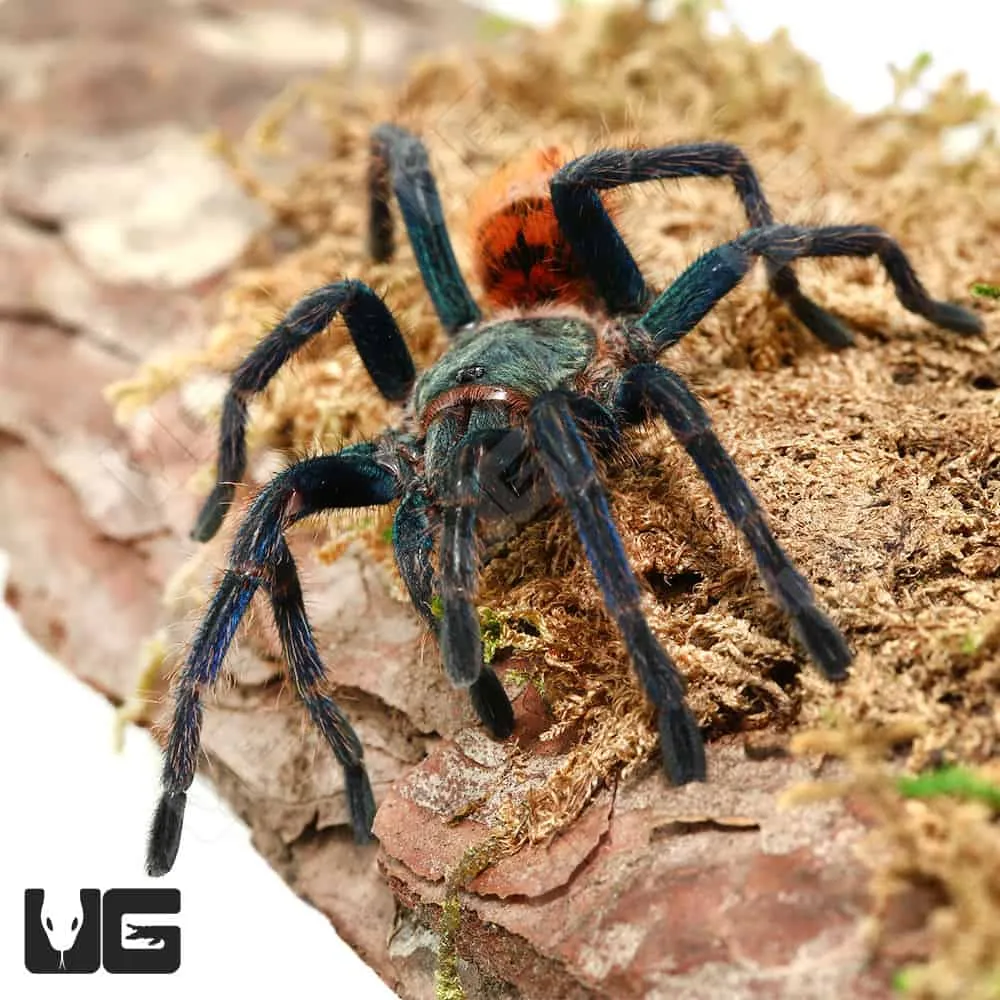
Moulting is a critical process for tarantulas, during which they shed their exoskeleton to grow. Blue Tarantulas, like other spiders, go through this process multiple times throughout their lives, especially during their juvenile stages. Moulting involves the spider creating a new, larger exoskeleton beneath the old one. When the time comes, the spider will lie on its back, and the old exoskeleton splits open, allowing the spider to emerge. This process can take several hours and leaves the spider vulnerable. Providing a safe and stress-free environment is crucial during this period to help your tarantula successfully moult and continue to grow. The process is vital for growth and the regeneration of lost limbs.
What to Expect During Moulting
During the moulting process, you will notice that your Blue Tarantula may stop eating and become less active. The spider might also display a change in color, and its abdomen may appear swollen. It is crucial not to disturb the spider during this process and to maintain the enclosure’s humidity and temperature levels. After moulting, the spider will be soft and vulnerable for a period, and it’s important to avoid handling it until its new exoskeleton has hardened. Providing a calm and stable environment allows your tarantula to moult safely and successfully. After moulting, the spider’s colors often become more vibrant, making it a rewarding process for both the tarantula and the keeper.
Caring for a Blue Tarantula
Caring for a Blue Tarantula involves providing a suitable environment that mimics its natural habitat. This includes creating an appropriate enclosure, maintaining the correct temperature and humidity levels, and providing a balanced diet. Regular monitoring and maintenance are essential to ensure the health and well-being of your tarantula. By following these guidelines, you can create a comfortable and thriving environment. Successfully caring for a Blue Tarantula requires dedication, research, and a willingness to learn more about these fascinating creatures. With the proper care, Blue Tarantulas can make captivating and rewarding pets.
Creating the Perfect Enclosure

The enclosure should be appropriately sized for the tarantula’s size, with enough space for the spider to move around comfortably. A 10-gallon tank is often suitable for juveniles, while adults may require a larger enclosure. It’s important to provide a substrate that retains moisture, such as a mix of coco fiber, peat moss, and vermiculite. The enclosure should also include hiding places like cork bark or artificial plants to provide security and reduce stress. Ventilation is essential to prevent mold growth. Ensure the enclosure is escape-proof, as Blue Tarantulas are skilled climbers. The setup of the enclosure plays a critical role in the spider’s well-being.
Substrate and Decorations
Choosing the right substrate and decorations is essential for creating a comfortable and enriching environment. A substrate that retains moisture, like coco fiber or a mix of peat moss and vermiculite, helps maintain the necessary humidity levels. Add a few inches of substrate to allow the tarantula to burrow. Decorations such as cork bark, artificial plants, and sturdy branches provide hiding places and enhance the enclosure’s aesthetic appeal. Avoid using sharp or abrasive materials that could injure the tarantula. The combination of the right substrate and decorations creates a functional and visually appealing environment for your Blue Tarantula.
Temperature and Humidity
Maintaining the correct temperature and humidity levels is crucial for the health of your Blue Tarantula. The ideal temperature range is between 75-85°F (24-29°C). Use a heat lamp or a heat mat attached to the side of the enclosure to maintain this temperature. Humidity levels should be kept between 60-70%, which can be achieved by lightly misting the enclosure with water once or twice a week. Regular monitoring using a hygrometer and thermometer is essential to ensure these conditions are consistently met. Proper temperature and humidity are critical factors in the Blue Tarantula’s overall health and ability to moult successfully. The correct environment mirrors their natural habitat.
Feeding Your Blue Tarantula
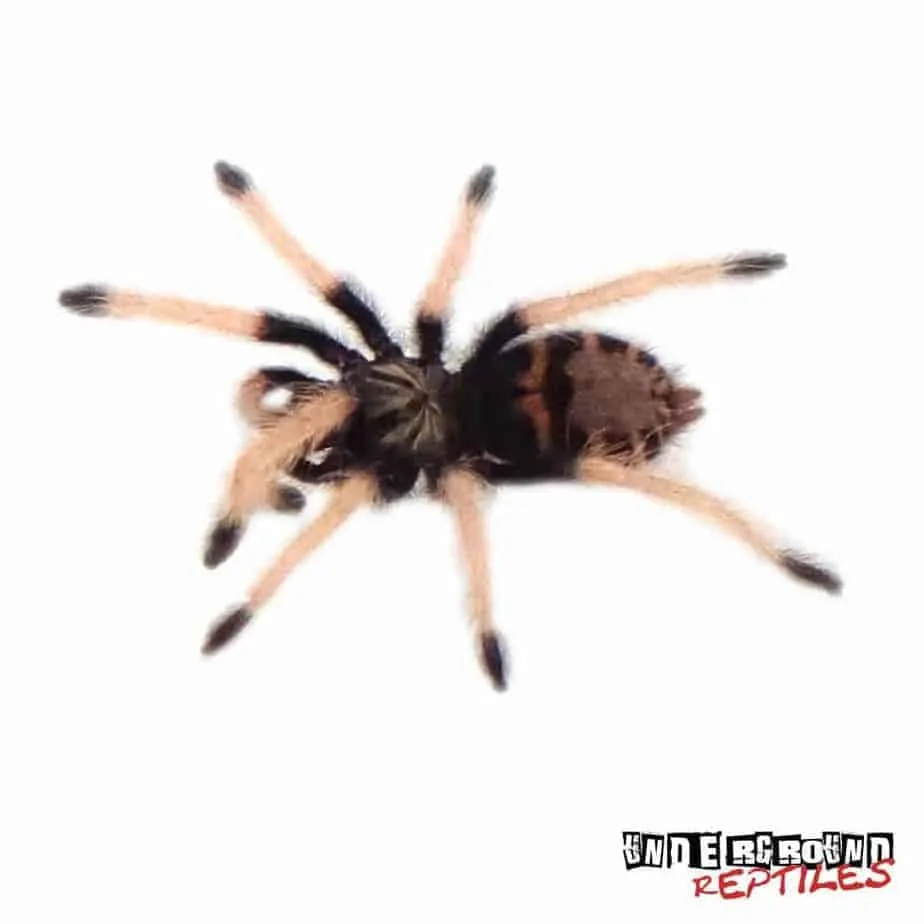
Feeding your Blue Tarantula involves providing a diet of live insects. Crickets, roaches, and mealworms are common food sources. The frequency of feeding depends on the spider’s age and size, with younger spiders requiring more frequent feedings than adults. Ensure that the insects you feed are healthy and free from pesticides. Providing a varied diet ensures your tarantula receives the necessary nutrients. The care taken with the spider’s feeding schedule directly affects its overall health and well-being. Proper feeding habits are essential.
Choosing the Right Food
The ideal diet for a Blue Tarantula consists mainly of live insects. Crickets are readily available and a good staple food, but it’s important to vary the diet to provide a range of nutrients. Roaches, such as Dubia roaches, are an excellent alternative and are less likely to burrow and hide. Mealworms can also be offered, but sparingly, as they are high in fat. Gut-load the insects before feeding them to your tarantula by providing them with nutritious food, which will, in turn, benefit your spider. Always remove any uneaten food to prevent the buildup of mold or mites. Variety in the food will ensure that your Blue Tarantula remains healthy and active.
Feeding Frequency
The feeding frequency should be adjusted based on the age and size of the Blue Tarantula. Spiderlings and juveniles need to be fed more frequently, approximately every 2-3 days, while adults can be fed every 5-7 days. Observe the spider’s abdomen; a plump abdomen indicates the spider is well-fed. Adjust the feeding schedule as needed to maintain a healthy body condition. Overfeeding can lead to health problems, and underfeeding can stunt the spider’s growth. Careful observation and adjustment of the feeding schedule will promote good health and longevity for the Blue Tarantula. Understanding the spider’s specific needs is essential for successful care.
Health and Common Issues
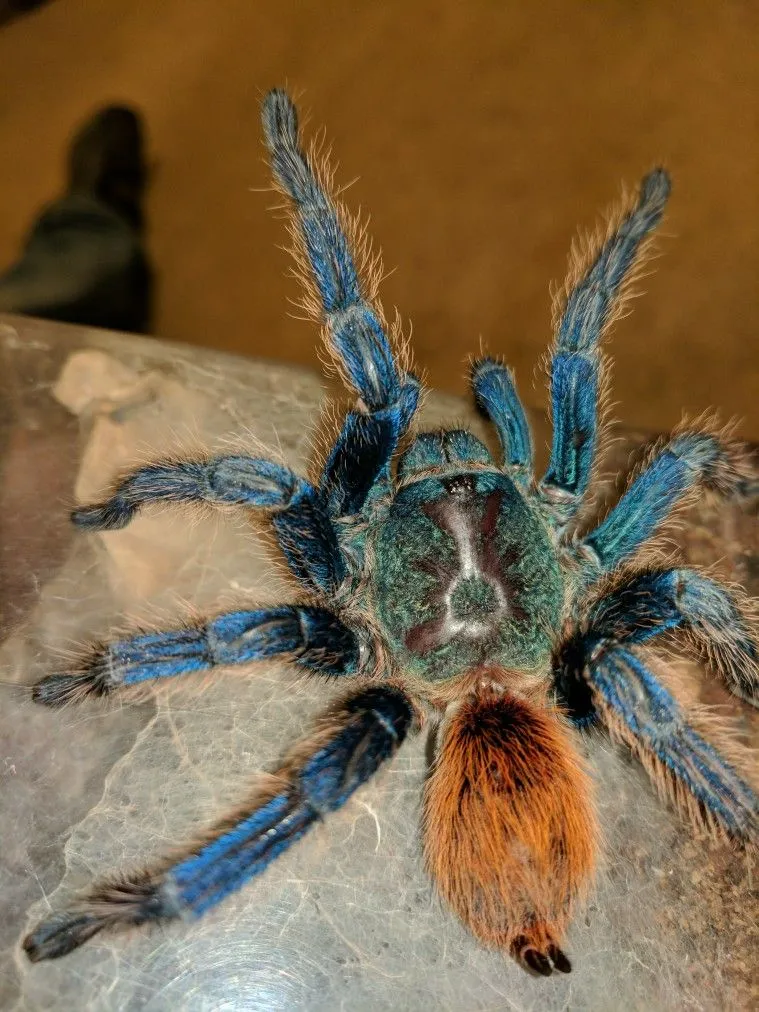
Blue Tarantulas are generally hardy creatures, but they can be susceptible to certain health issues if their care is not optimal. Common problems include mites, fungal infections, and dehydration. Regular observation and preventative care measures can help in identifying and addressing these issues early. Providing a clean and well-maintained environment is crucial in preventing many of these health problems. Addressing any health issues promptly is important for your pet’s health and well-being. Being proactive in the care helps prevent potential issues before they become serious.
Recognizing Signs of Illness
Recognizing signs of illness is essential for the early treatment of your Blue Tarantula. Some of the common signs to watch out for include lethargy, loss of appetite, and unusual behavior, such as sitting in the open or struggling to move. Check for any unusual growths, discoloration, or signs of mites. If you notice any of these symptoms, it’s crucial to consult with a veterinarian experienced with invertebrates. Prompt intervention can significantly improve the chances of a successful recovery. Careful observation is critical for recognizing health issues early, and it promotes overall wellbeing.
Preventative Care Measures
Preventative care measures are the best way to keep your Blue Tarantula healthy. Regularly clean and maintain the enclosure to prevent the build-up of mold and bacteria. Provide a balanced diet and appropriate humidity and temperature levels. Quarantine new tarantulas for a period to prevent the introduction of any potential illnesses. Always wash your hands before and after handling your tarantula. Routine checks of your pet’s overall health are very beneficial. Preventative care is key to ensuring a long, healthy life for your Blue Tarantula. Taking these measures helps to minimize health risks and ensures your pet enjoys a fulfilling existence.
Conclusion
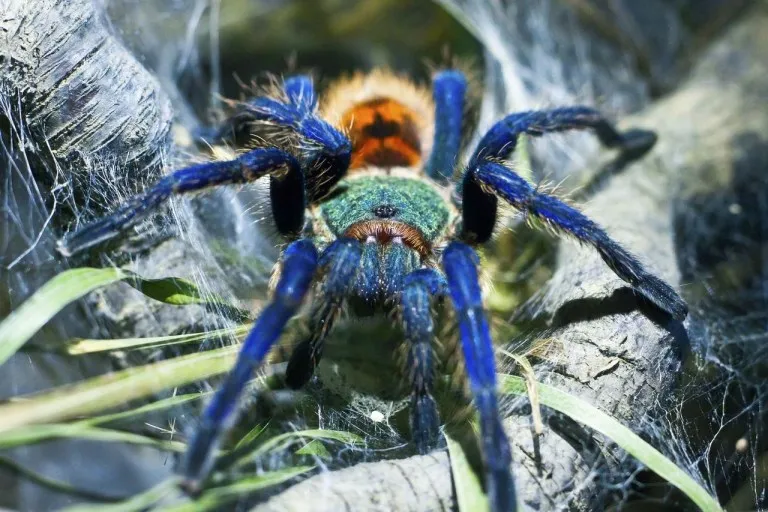
The Blue Tarantula is a fascinating and beautiful creature, and with proper care, it can be a rewarding pet. By understanding its unique characteristics, providing a suitable habitat, and following best practices for feeding and health care, you can ensure that your Blue Tarantula thrives. Remember to always do your research, stay informed, and enjoy the experience of keeping these captivating spiders. The vibrant colors and relatively docile nature of the Blue Tarantula make it a beloved addition to the homes of many enthusiasts. A healthy and happy Blue Tarantula can bring you years of enjoyment.
